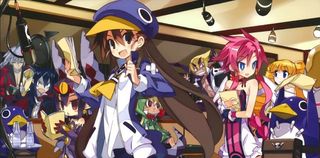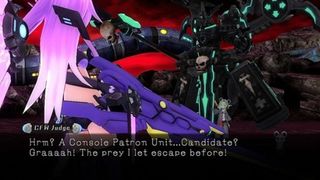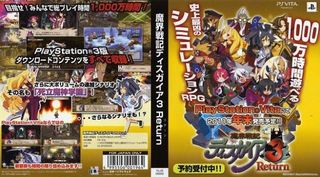Ask GR Anything: How are games localized?
How do they get from there to here? And why didn't your favorite game make the trip?
Ask GR Anything is a weekly Q&A column that answers questions submitted by readers (as well as questions we're particularly curious about ourselves). Got a burning question about games or the industry? Ask us in the comments below and you may just get it answered!
Here at Ask GR Anything we often get questions involving game localization. Since the beginning gaming has been an international business, with publishers selling games all over the world, which means for each territory a game needs to be translated and adjusted to fit each culture. Even now, in an age where the internet crosses borders worldwide, it can take a surprising amount of time to localize a game (if they even get released internationally). And publishers can be frustratingly opaque when asked why a treasured game isn't being released in a specific territory. This all leads to a lot of confusion over the process of translating games to other countries.

Above: This may or may not be how NIS records game dialogue
What actually happens during the localization process? And why do some games get lost along the way? We got in touch with Jack Niida, a producer at NIS America, one of the most prolific localization companies in the West. NISA is best known to gamers for localizing titles like the Disgaea series, Hyperdimension Neptunia, and the Prinny series.
"For our titles, we begin by first discussing the title with the Japanese development team several months before the game is released in Japan," said Niida. "Here we plan out the schedule and also what direction we would like to pursue for the West. We ask ourselves whether we have to change content from the original Japanese version, or will we keep the exact same content and tone. "
Niida said that a lot of the work done here in the early stages is to prevent small discrepancies becoming big problems. If you're tinkering with the tone of a story, you've got to be very sure that you know what you're doing before you start recording voices.
"We will receive all the text files and voice files from the original game, and we then begin our localization according to our schedule," said Niida. "Generally, we try to begin with system text (for example, graphical image text, tutorials, battle system text) and then move on to the voiced story dialogue. This takes around three months, and then comes the voice recording. Our voice recording is all done locally in Southern California with different studios. It usually takes about a week or two for a project, but smaller action-based games can be finished quicker. But action games are tougher for the voice actors, since they're often all battle cries that strain their voices quite a bit."
Sign up to the 12DOVE Newsletter
Weekly digests, tales from the communities you love, and more

Above: Never underestimate how much work it takes to make Japanese drama understandable for Western audiences
It's often not as simple as re-recording voices and re-writing text though. Sometimes the game itself needs to be reprogrammed in small ways to suit the new language. We once spoke with a developer from Hello Games about the localization process for Joe Danger in Germany. He mentioned that it actually became a huge pain because of the nature of the German language. In German, new words are rarely created. Rather, old words are stacked on top of each other to form a sort of Voltron word with a new meaning. As a result, you sometimes get words that are 20+ letters long. In the case of Joe Danger, we were told that meant some sections of text couldn't be fit in certain places.
"When all of the translating, editing, and recording is done, we send the final audio and text files to the developer, who will program everything into the game," said Niida. "Game debugging will begin shortly after this, and can take anywhere from one month to three months. Once we determine that the game is ready, we send the master copy off to the first-party publisher (Sony, Nintendo, Micosoft) for the master submission process."
So how much work does all of this take? One of the things we were most curious about is how many people it takes to bring a game from Japan to the US.
"Bringing a game over to the West isn’t easy," said Niida. "From initial negotiations to a signed contract to actual manufacturing can take up to a year or year and a half on average. For our titles, it takes six to seven people at NISA to keep the project moving forward, not including outside testers, programmers, and recording studio engineers."

Above: There's no shortage of things that need to be redone for a North American release, up to and including the graphic design of the box art
The final question we had, and the biggest thing on most people's minds was why some games never make it stateside despite a seemingly large demand. Niida told us that it's a very simple problem. It just comes down to money. A large game like Xenoblade Chronicles takes quite a bit of money to translate and re-record. Add that on top of the cost of manufacturing and shipping the game a second time, and it can be tough to recoup those kinds of costs. Unfortunately, demand needs to be higher than a few thousand very vocal people on the internet, and companies need to be wary of letting those few, loud voices control the conversation. They need to figure out if the general gamer is going to have any interest.
"I can assume that some titles can never recoup their localization costs, so publishers have no choice but to abandon some projects. It’s becoming tougher and tougher to sell retail package games, so this is an issue that we face as well."
Submit your own questions in the comments (or Tweet them to @sciencegroen) and we may tackle them in a future Ask GR Anything.
Most Popular



